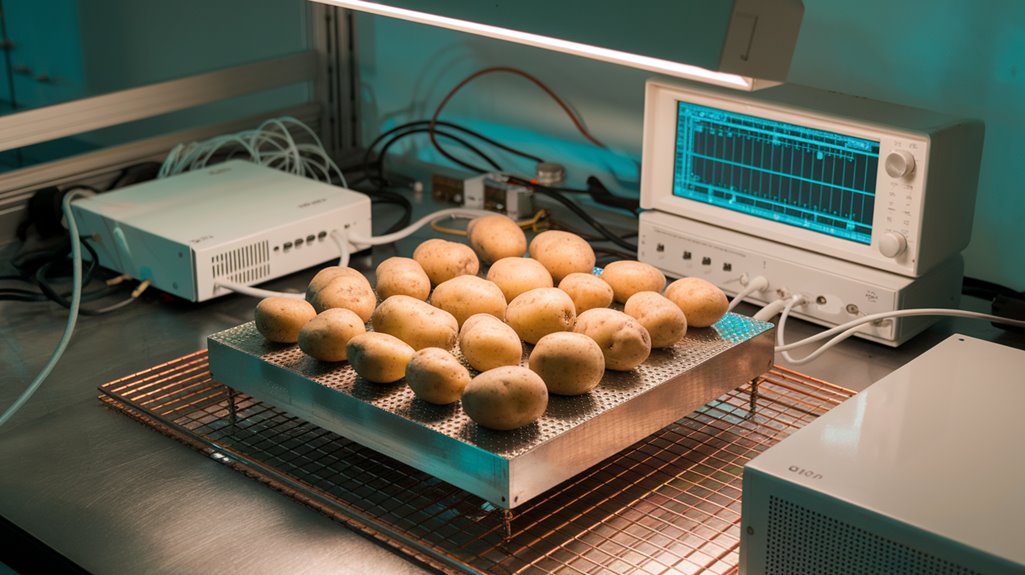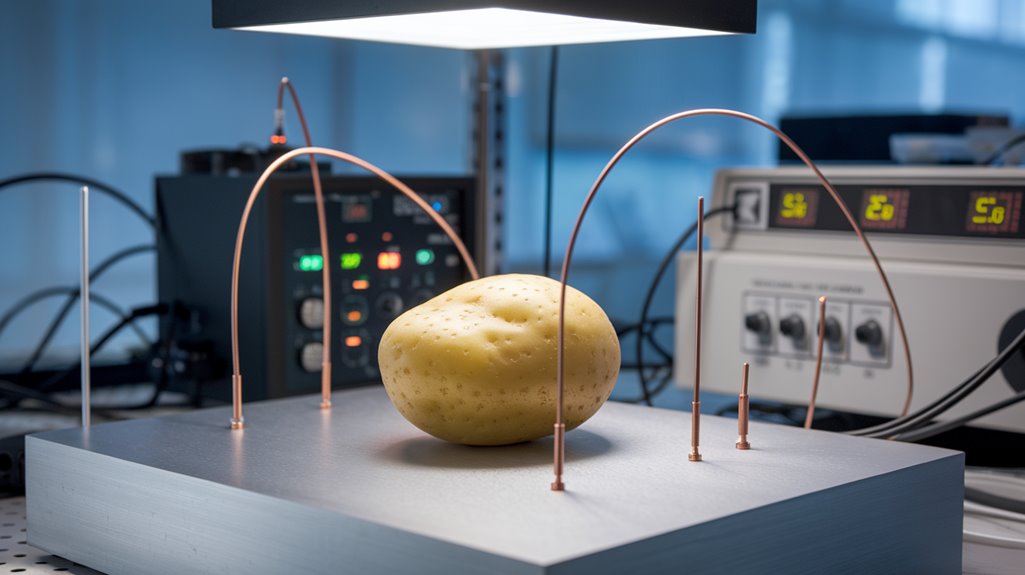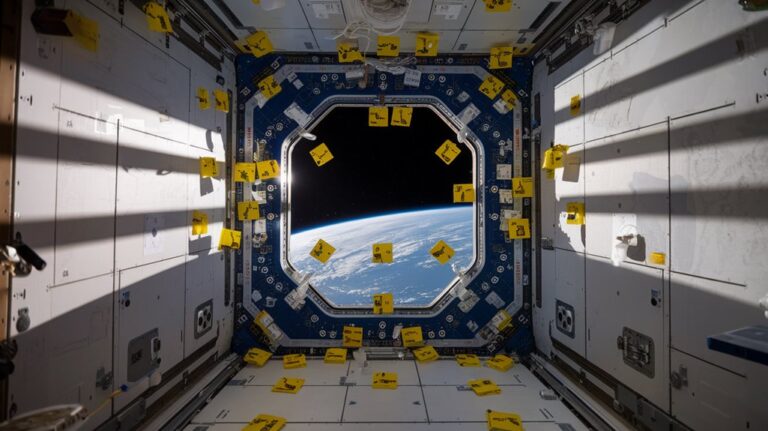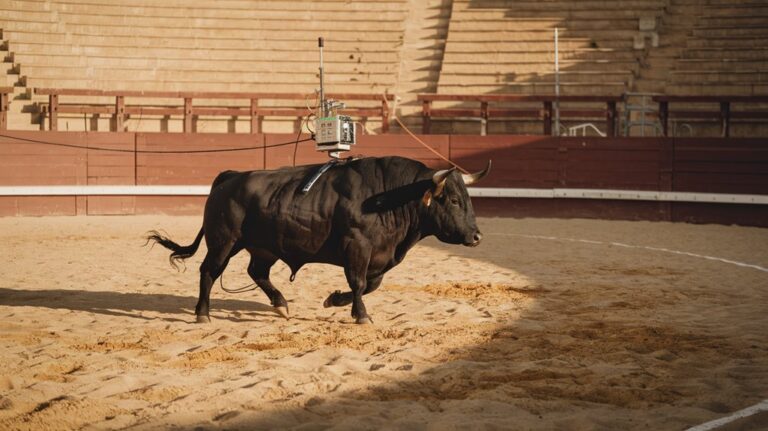Potatoes Can Absorb and Reflect Wi-Fi Signals
You might think potatoes are just humble vegetables destined for your dinner plate, but they're actually helping revolutionize in-flight Wi-Fi technology. When you're sitting on a plane scrolling through social media, you can thank these starchy tubers for your reliable connection. Boeing's remarkable discovery that potatoes mirror human tissue's interaction with Wi-Fi signals has transformed how engineers test and optimize internet connectivity in aircraft. There's more to this unexpected partnership between produce and technology than meets the eye.
The Science Behind Wi-Fi Signal Absorption
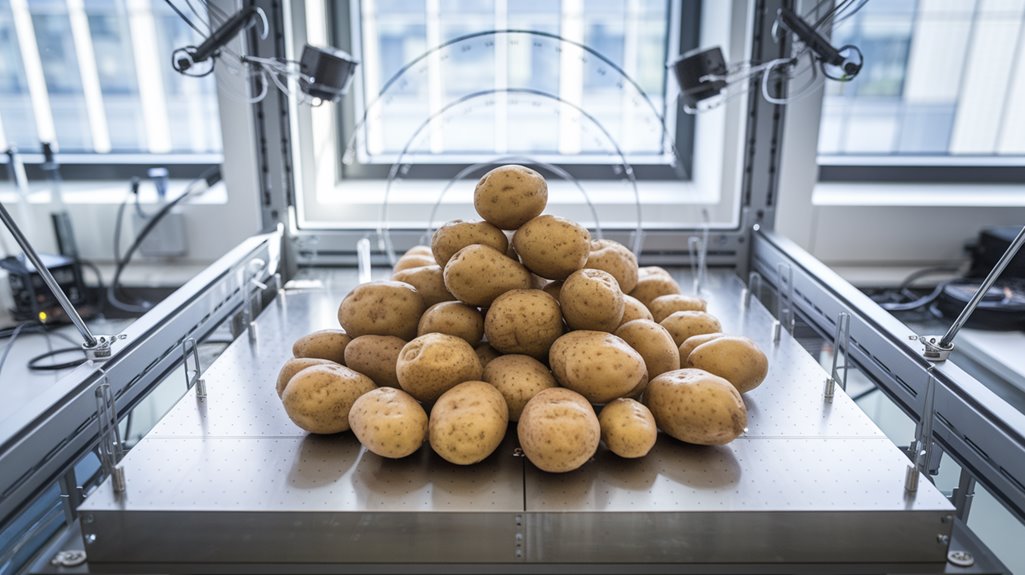
While Wi-Fi signals invisibly connect our devices, understanding how they interact with objects is vital for ideal network performance. These electromagnetic waves behave similarly to visible light, as they can be absorbed, reflected, or pass through different materials depending on their composition.
When Wi-Fi materials like concrete, brick, or metal come into contact with these signals, they create varying levels of interference. You'll find that signal interaction depends largely on the material's atomic structure and density. The optimal distance for maintaining strong connectivity is typically 150 to 300 feet from your router.
Metal surfaces tend to reflect signals, while water molecules readily absorb them. Even everyday objects can impact your network's performance – concrete walls cause significant signal loss, but materials like drywall and wood have minimal effect. The National Institute of Standards conducted extensive testing to evaluate signal loss through various building materials.
The thickness of these materials also plays an important role, with denser substances creating more substantial barriers to your Wi-Fi transmission.
Boeing's Innovative SPUDS Project
In what may be one of aviation's most peculiar experiments, Boeing revolutionized in-flight Wi-Fi testing through an unlikely hero: the potato.
Through their SPUDS project, engineers discovered that potato physics could accurately simulate how human bodies interact with wireless signals in aircraft cabins. The properties were first identified in a Journal of Food Science study examining vegetable dielectric characteristics. The team used 20,000 pounds of potatoes to conduct their groundbreaking tests.
You'll be amazed to learn that this innovative approach reduced testing time from two weeks to just 10 hours.
By filling a decommissioned plane with sacks of potatoes, Boeing's team achieved remarkable signal optimization results across their 777, 747-8, and 787 Dreamliner models.
Their proprietary system helped identify and eliminate weak spots while ensuring Wi-Fi signals wouldn't interfere with critical navigation equipment.
The success of this unconventional method has even sparked interest in applying similar testing approaches to other high-density environments where wireless connectivity matters.
Why Potatoes Mirror Human Properties
Because potatoes share remarkably similar dielectric properties with human bodies, they've proven to be ideal stand-ins for Wi-Fi signal testing.
You'll find that potato properties, particularly their high water content and chemical composition, mirror human tissue in how they absorb and reflect radio waves at specific frequencies.
This human similarity isn't just a coincidence – it's backed by scientific research published in the Journal of Food Science, which compared dielectric constants of various vegetables. Just as potatoes can conduct electricity using their chemical electrolytes, they also effectively mirror human tissue properties in Wi-Fi testing.
Engineers used approximately 9000 kg of potatoes during their aircraft testing to accurately simulate the presence of 200 passengers.
You can understand why Boeing chose potatoes for their aircraft Wi-Fi testing, as these vegetables accurately simulate how your body would interact with wireless signals.
When you're designing Wi-Fi systems for enclosed spaces like aircraft cabins, you need test subjects that'll consistently replicate human presence – and potatoes do exactly that.
Testing Wi-Fi Signals in Aircraft
Since testing Wi-Fi signals in aircraft presents unique challenges, Boeing launched its innovative SPUDS project using 20,000 pounds of potatoes to simulate passenger-filled cabins.
This unconventional approach revolutionized Wi-Fi optimization in aircraft design by reducing testing time from two weeks to just 10 hours.
You'll find that aircraft cabins create complex environments for Wi-Fi signals, requiring sophisticated simulation tools and precise antenna placement.
Aircraft simulations revealed that signal strength in empty cabins was significantly stronger than in passenger-filled spaces.
Boeing's engineers use full-wave methods and MPI+GPU processing to model various seating layouts and passenger sizes effectively.
The SPUDS project guarantees that signals don't interfere with critical navigation equipment while maintaining strong connectivity throughout the cabin.
Through these advanced testing methods, you'll now experience reliable in-flight Wi-Fi that uses different transmission technologies, including ATG, Ku band, and Ka-band systems.
The added weight from Wi-Fi equipment and antennas causes increased fuel consumption costs for airlines.
Revolutionizing In-Flight Internet Testing
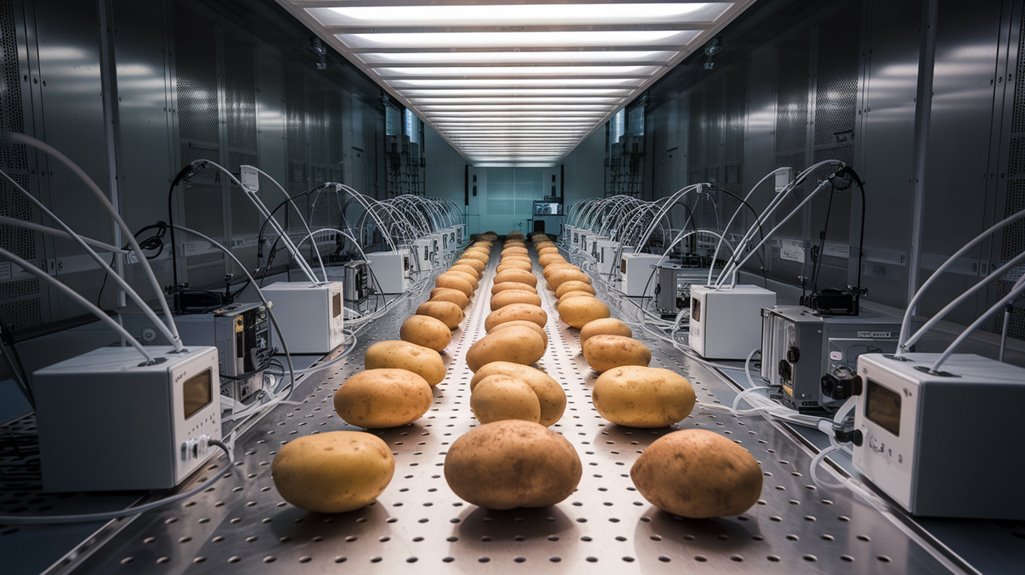
While testing Wi-Fi signals in aircraft traditionally required weeks of work with human volunteers, Boeing's innovative SPUDS project transformed the process by using 20,000 pounds of potatoes to simulate passenger-filled cabins.
This creative solution slashed testing time from two weeks to just 10 hours, demonstrating how unconventional thinking can solve complex technical challenges.
You'll find it fascinating that potatoes weren't chosen randomly – their water content and chemical composition mirror how human bodies absorb and reflect radio waves.
Boeing engineers placed potato sacks throughout a decommissioned plane to identify and eliminate Wi-Fi dead spots.

